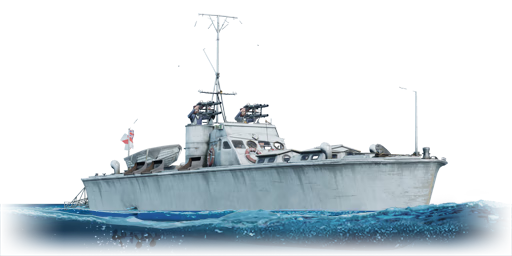



The MTB-1 was a motor torpedo boat designed for the Royal Navy by the British Power Boat Company in 1935. The class was conceived after the realisation that the RN was lagging behind in terms of light torpedo boats compared to their counterparts in Germany and Italy. In total, 30 boats of the MTB-1 design were built.
The second series of the MTB-1, designated MTB-1(2), was built in Canada by the Canadian Power Boat Company. The boat featured a slightly different gun arrangement, with the two quadruple 7.72 mm Lewis machine gun mounts now placed on the flanks of the wheelhouse, as well as replacing the steel deck with one made out of mahogany due to corrosion issues. In total, 12 MTB-1(2) boats were built.
The MTB-1(2) was introduced in Update 1.85 "Supersonic". Decently fast and manoeuvrable, the MTB-1(2)'s key difference over its tech tree counterpart, the MTB-1(1), is the placement of a pair of quadruple Lewis MG mounts that allows it to fire both mounts frontally, while still retaining the mediocre torpedoes from its counterpart. While the Lewis MGs are capable of dealing a good amount of damage due to sheer burst mass, they have a very short effective range of just 400 metres at best against typical PT boats, further compounded by an extremely long reload time that limits the overall damage output.
| Belt | Belt filling | Armor penetration (mm) at a distance: | |||||
|---|---|---|---|---|---|---|---|
| 10 m | 100 m | 500 m | 1000 m | 1500 m | 2000 m | ||
| AP/T/AP/T | 10 | 9 | 8 | 7 | 6 | 5 | |
| AP/AP/AP/T | 10 | 9 | 8 | 7 | 6 | 5 | |
| IT/IT/IT/IT | 10 | 9 | 7 | 6 | 5 | 5 | |
6 × Mk.VII depth charge






 2 x (15 / 20) %
2 x (15 / 20) % 
 2 x 75 %
2 x 75 % 


Seakeeping | |
|---|---|
Unsinkability | |
|---|---|
Firepower | |
|---|---|